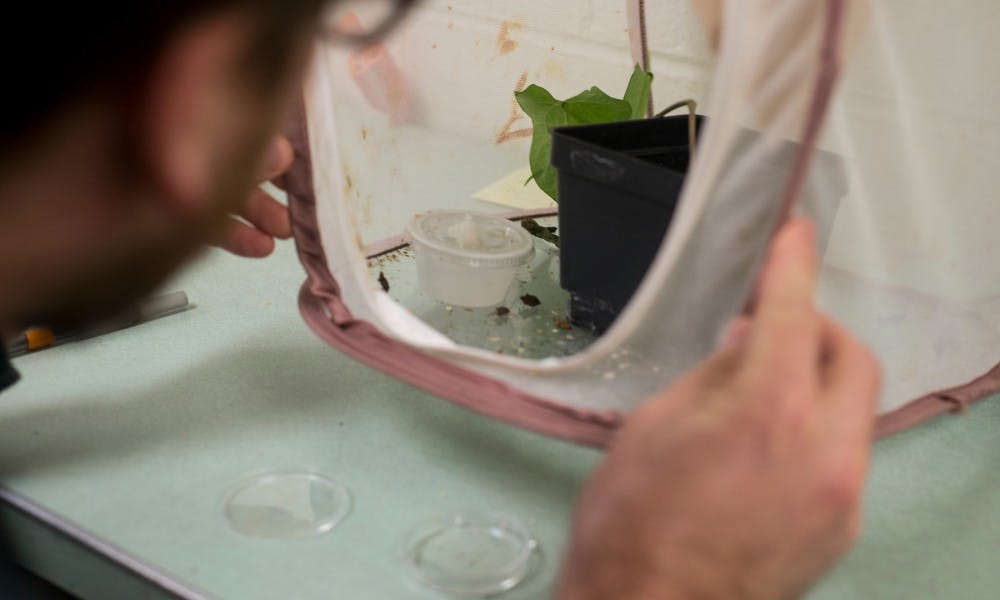Stink bugs in Michigan are increasing, despite an overall decrease nationally, leading a professor at MSU to collect more information and find ways to decrease the population of the bug.
“They hit their peak in Mid-Atlantic states from 2011-13,” entomology professor Matthew Grieshop said. “In areas where they have just arrived, including Michigan, they are rapidly increasing in population.”
Grieshop said the Asian insect began showing up in America in the late 1990s.
“The first appearance in America was in Pennsylvania,” Grieshop said. “Fall 2010 is when they surfaced in Michigan. My mother and I were eating dinner outside at a restaurant in Okemos. A bug landed on her salad plate, I grabbed it and realized it was a brown marmorated stink bug.”
Stink bugs acquired the name because of the smell they emit when frightened or killed. Grieshop said the smell of a brown marmorated stink bug, when disturbed, is similar to a mix of cilantro and dirty sweat socks.
“These stink bugs are a nuisance,” Grieshop said. “They are harmless. I have never heard of anyone getting bit by a stinkbug but, (if so) they do not carry diseases.”
While individuals do not have to worry about catching anything from these stink bugs, Grieshop gave some tips on how to keep them out of your homes.
“To ensure that the stink bugs do not come into your home, you should make sure you have a nice, tight exterior,” Grieshop said. “Close openings with expanding foam.”
Grieshop said stink bugs enter homes because they are looking for a place to stay for the winter.
Julianna Wilson, MSU Tree Fruit IPM Outreach Specialist, works to know the amount of stink bugs in a certain area to alert growers.
“We try to get people, anyone, to report this insect entering their home because before it becomes a serious agricultural pest, it is a home owner nuisance pest,” Wilson said. “I was trying to get people to report it at the Midwest Invasive Species Information Network (MISIN) site. Before I put the article out, there were six to eight entries and now there are more than 2,500 entries.”
Wilson said there has been a few reports of damage in apple orchards due to the stinkbugs so far. The population of the stink bug is greater in the southern part of Michigan.
While brown marmorated stink bugs are harmless, Ernest Delfosse, MSU professor in the Department of Entomology, works to find ways to decrease the population as a whole.
With the help of the only BSL-2Ag quarantine facility in the state, Delfosse uses wasps overseas to act as an enemy to the stink bugs.
Grieshop said the Trissolcus japonicus wasp originated in Asia and traveled to North American on its own, is a native parasitoid of the brown marmorated stink bug.
“The testing that we’re doing involves collecting native stink bugs all over Michigan,” Delfosse said. “We put the native stink bug eggs together with this wasp in small containers and let them lay their eggs into the native stink bug eggs. The whole program is to determine what the risk to the native stink bugs might be. So far, what we are finding, we are starting to see that there are some ecological factors in the field will be very minimal to the native stink bugs.”
Both Grieshop and Delfosse are collecting live adult brown marmorated stinkbugs to aid them in their research.
If you are able to capture a stink bug alive, you can drop it off in room 243 of the Natural Science Building or the Center of Integrated Plant Systems (CIPS) Building.

